Posted by Elena del Valle on August 26, 2011

Brand Atlas book cover
Photos: Dean & Blume PR
In Brand Atlas Branding Intelligence Made Visible (Wiley, $29.95), a 144-page hardcover book published this year, Alina Wheeler and Joel Katz outline the basic ideas they consider important for readers wishing to understand and make use of branding today. Their objectives in the book are to focus on what they consider the three essential areas to be conquered for those seeking to build their brand: understanding the marketplace and its trends, understanding brand basics and gaining access to the right methods and tools.
The book, filled with four-color pages, is divided into four main sections: Dynamics, Intelligence, Drive and Details. The concepts are outlined briefly, one per page, across from a four-color design page. The authors discuss topics such as global sourcing, word of mouth, open source, social networks, transparency, sustainability, Freeconomics (making a profit while offering free content), touchpoints, authenticity, and perception.
Wheeler, a branding consultant, authored Designing Brand Identity. She was advisory council member for The Dictionary of Brand. Katz, an information designer specializing in visualization of complex information, teaches at The University of the Arts and Philadelphia University.

Alina Wheeler, coauthor, Brand Atlas

Click to buy Brand Atlas
Comments:
Filed Under: Books
Posted by Elena del Valle on August 19, 2011
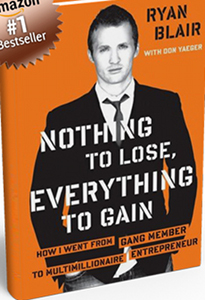
Nothing to Lose book cover
Photo: Higher Level Group
When Ryan Blair was a boy he suffered hardships and made bad choices that led to unfortunate results. As a young man his life took a better turn and eventually he became a self-made multimillionaire and serial entrepreneur. He established his first company, 24-7 Tech, when he was twenty-one years old, and has since created and actively invested in multiple start-ups.
More recently, as the head of ViSalus Sciences during the height of the 2008 recession he turned the company around from near failure to more than $10 million a month in only 15 months.
Blair recently shared some of his life and business experiences and opinions in Nothing to Lose, Everything to Gain: How I Went from Gang Member to Multimillionaire Entrepreneur (Portfolio Hardcover, $25.95), a 214-page softcover book divided into eighteen chapters.
The author believes that people with nothing to lose have great potential. He is convinced that his street smarts and nothing-to-lose attitude account for his success in life.
“There is nothing more dangerous than someone with nothing to loose,” he says. “Just like an animal backed into a corner your survival instincts kick in.” In the Epilogue he also says that “No matter how successful you are, you have to take every last day and live it as if you had everything to gain.”
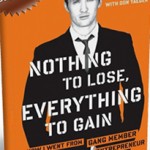
Click to buy Nothing to Lose, Everything to Gain
Comments:
Filed Under: Books
Posted by Elena del Valle on August 12, 2011
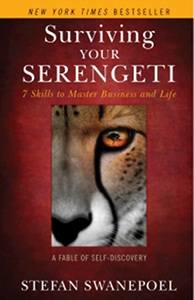
Surviving Your Serengeti book cover
Photos: Wiley
A salesman and entrepreneur born in Kenya believes it makes sense for business people suffering in the down economy to seek inspiration from some of the better known animal species in East Africa’s Serengeti and their behaviors. He proposes seven skills today’s executives should learn from the plains animals who make a thousand mile seasonal journey fraught with challenges and danger.
In Surviving Your Serengeti: 7 Skills to Master Business and Life (Wiley,$21.95) Stefan Swanepoel outlines a fable of a beleaguered California business owner and his wife on a safari trip to the Serengeti. On their first night in a safari tented camp in Tanzania, they run into a college acquaintance of his who describes the skills of each of seven animals he has been observing in their natural habitat.
He believes the skills humans can emulate are based on the animals’ unique survival skills. The seven he highlights are: Wildebeests stand out for their endurance, lions for their strategic hunting abilities, crocodiles for their enterprising nature, cheetahs for their efficiency, giraffes for their grace under stress, mongooses for their risk taking, and elephants for their superior communication skills.

Stefan Wanepoel, author, Surviving Your Serengeti
The 176-page hardcover book is divided into nine chapters, an introduction, one to describe within the story each of the animal’s skills, and a final chapter where he wraps up the story and his concept as well as an Epilogue.
According to his bio, prior to writing the book, one of nineteen he has authored, Swanepoel ran a New York-based franchise network with 25,000 sales staff in 30 countries. A resident of California he has been president of seven companies and two nonprofit organizations.

Click to buy Surviving Your Serengeti
Comments:
Filed Under: Books
Posted by Elena del Valle on August 5, 2011

How to Protect Your Family’s Assets book cover
Photos: News and Experts
The average monthly costs of nursing home care in the United States are $6,470 (according to How to Protect Your Family’s Assets) and the American Association of Retired Persons estimates the median annual cost of a private nursing home room is $75,000. That is a lot of money for just about anyone except the very wealthy. As the country’s aging Baby Boomer population faces its future how will the millions of members of that generation deal with illness, nursing home issues and the related financial obligations they come with? Many, especially in these trouble economic times, feel unprepared to deal with retirement, the health issues that accompany old age, nursing homes and hospice care.
What is a family to do? K. Gabriel Heiser, J.D. believes those who prepare in advance and learn about the issues they will have to deal with deserve to take advantage of government programs and protections such as Medicaid. He has specialized on estate planning and Medicaid eligibility planning, trusts, estates, gifts, and related tax issues, since graduating from Boston University School of Law in 1983. The mistake a lot of people make is thinking that they can’t qualify for Medicaid, according to Heiser who is author of How to Protect Your Family’s Assets from Devastating Nursing Home Costs: Medicaid Secrets (Phylius Press, $47).
“Many feel that because they own a home or have some assets that they can’t qualify for Medicaid help with their nursing home and doctor’s bills,” he said. “The truth is there are a variety of assets people can own and still qualify. It’s just a matter of knowing the rules, and making a plan to meet those requirements.”
The 281-page softcover book first published in 2007 and reprinted annually through 2010 is bright red with big green, white and brown letters. It is divided into nineteen chapters: Introduction, What Is Medicaid?, What Is Covered by Medicaid?, Applying for Benefits, Medicaid Qualification Rules, Income Qualification Rules, Asset Qualification Rules, Transferring Assets, Trusts, Strategies to Qualify, The Home: Planning Ideas, Annuities, Promissory Notes, Transfer Strategies, Post-Eligibility Issues, Estate Recovery, Case Studies, Veterans Pension: How It Works, and Veterans Pension: Planning Techniques; and an appendix.
Heiser strongly urges readers to rely on the counsel of a professional and use his book to be informed and prepare questions for the professionals who assist them. All the “secrets” and tips he shares, he explains, are legal and ethical.
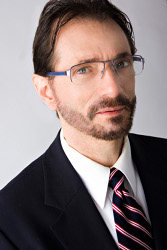
K. Gabriel Heiser, author, How to Protect Your Family’s Assets
“There are so many other rules that can benefit those who aren’t sure they’ll have enough when the time comes,” said Heiser. “The key is to plan now and act now. These laws exist for your protection, and avoiding the discussion and the planning necessary to take care of the potential complications just because it is an unpleasant topic will only result in a more unpleasant conversation when you realize you’re not ready when the worst happens. That can be a very expensive dilemma. Peace of mind right now, however, won’t cost a dime, and could save you hundreds of thousands of dimes later.”

Click to buy How to Protect Your Family’s Assets from Devastating Nursing Home Costs (5th edition)
Comments:
Filed Under: Books
Posted by Elena del Valle on July 29, 2011
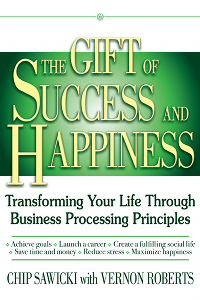
The Gift of Success and Happiness book cover
Photos: Skyhorse Publishing
Are you happy? Are you successful? How do you measure success? Does happiness accompany success? Chip Sawicki, an adjunct professor at Wake Forest University, and Vernon Roberts, a leadership facilitator, believe they have the answers to these questions.
In The Gift of Success and Happiness Transforming Your Life Through Business Processing Principles (Skyhorse Publishing, $16.95), a 240-page softcover book published in May of this year, the two men discuss their ideas on how an ambitious person might achieve personal happiness and professional success. They believe it is possible to have both without sacrificing one in favor of the other. They also believe that finding happiness is in each person’s hands and the result of the decisions he or she makes.
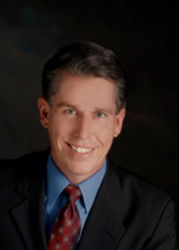
Chip Sawicki, author, The Gift of Success and Happiness
Financial success results when people set and meet ambitious goals for themselves; happiness is the result of setting reasonable expectations that are fulfilled regularly; and it is necessary to contribute to the community in order to feel satisfied, they say in the Preface. According to them, making all these interconnected goals a reality requires planning; and, in the same way that executives in successful companies make plans to reach their goals people need to make plans to meet their interconnected goals and find well rounded happiness.
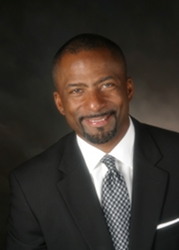
Vernon Roberts, contributor, The Gift of Success and Happiness
The book is divided into 14 chapters and three main parts, Primary Sources of Stress, The Core Elements of Life, and What Gives Our Lives Depth. In the book, the authors offer step-by-step plans that can be personalized for each major shift in a person’s life, such as: suggestions for a clear structure to balance success and happiness, self-evaluation worksheets, suggestions to develop the most important elements in a person’s life, ways to avoid unnecessary stress resulting from social, financial, and time management issues, and business ideas for productive decisions.
Prior to his position at Wake Forest University Sawicki was chief financial officer of the Texas Rangers and Stars sports teams and after that he was a stay-at-home dad. Roberts, founder of Evoke Learning & Performance, is a coach and performance consultant.
Comments:
Filed Under: Books
Posted by Elena del Valle on July 8, 2011

Ipad 2 book cover
Photos: O’Reilly Media Inc.
I bought my iPad as a last minute replacement for a netbook that, after less than a year of service, died two days before I was due to go on an overseas trip. I wish iPad 2 The Missing Manual by J.D. Biersdorfer (O’Reilly Media $24.99) had been available then. It would have saved me several missteps. Eventually I got the hang of the basic features and it was easier than it might have been for me because, as the salesman at the Apple store explained, the iPad is like an iPhone but bigger.
As the iPad revolution continues with the new iPad 2 introduced earlier this year more users are joining the tens of thousands, or perhaps hundreds of thousands, of fans of the thin and light weight tablet. Simple functions like turning the iPad on and off can be important. I discovered before reading the book for example, that if you don’t turn off the iPad completely and it runs out of battery power it looses the stored data and apps, requiring a recharge and a reloading of data and apps. If this happens during a business meeting or trip it can be inconvenient.
Biersdorfer’s book is filled with color photos and user friendly explanations as well as Notes and Tips. Some of the comments have a touch of humor like one about the description of the screen’s fingerprint resistant oleophobic coating seeming to describe a psychiatric condition or a fear of butter substitutes. In relation to video capability, I liked the tip about the iPad playing hi-def video at the lowest resolution available and the list of video conversion programs on page 243.

J.D. Biersdorfer, author, ipad 2
The 313-page book is divided into sixteen chapters and two appendices: Get to Know Your iPad; Interact with Your iPad; Get Online; Surf the Web; Keep in Touch with Email; Use the iPad’s Built-in Apps; Shop the App Store; Read iBooks and ePeriodicals; Play Games; Get Productive with iWork; Organize and Sync Media Files with iTunes; Master iTunes; Play Music and Other Audio; Watch and Edit Videos; View, Edit and Manage Photos; and Sync Up with MobilMe. The appendices address troubleshooting and iPad settings.
Biersdorfer has written a computer column for The New York Times since 1998. Prior to this book she authored iPod: The Missing Manual, Best iPhone Apps and Netbooks: The Missing Manual.

Click to buy iPad 2
Comments:
Filed Under: Books
Posted by Elena del Valle on July 1, 2011
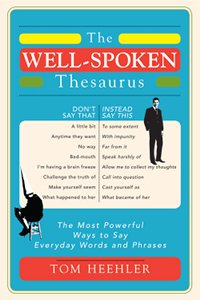
The Well-Spoken Thesaurus book cover
Photos: Sourcebooks Publicity
Often business people use the same words and phrases repetitively. It is not that they do not know other words it is that certain words and expressions have become familiar and comfortable. While that may be acceptable in everyday conversation with colleagues at the office it may present less than a professional face when attending meetings with clients, bosses or others in the industry.
A rich vocabulary populated with phrases other than “you know” and “not so much” and such popular expressions may enhance the way others perceive our knowledge and abilities and better position us for growth and promotion. To make a good impression we could slightly alter the word choices we usually make. Instead of saying elegant maybe we could say luxuriant; instead of saying writing skills we may try saying writing prowess, for example.
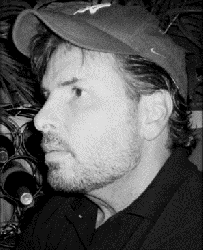
Tom Heehler, author, The Well-Spoken Thesaurus
The Well-Spoken Thesaurus (Sourcebooks, $12.99), a 405-page softcover book of alternate words by Tom Heehler, could be a handy tool for vocabulary development. Published in February 2011 the book is the result of four years of work by the author after enrolling at Harvard University in the spring of 2006. Finding no easy way to improve his speech and prose quickly, he wrote down what he said and paired it with what he thought he should have said.
Heehler considers words to be “like little gods” and believes they affect people’s political leanings, the way they see reality, their confidence and self perception, according to the On Becoming Articulate section at the beginning of the book. In that section he goes on to say that people who are well spoken are expected by others to be more knowledgeable, more informed and capable of great things.
The Thesaurus contains 17 lessons from famous authors, like Ernest Hemingway, to well known speakers, such as President Barack Obama in the first part of the book. It also includes thousands of alternatives to common words and phrases.
Heehler is a degree student at the Harvard University Extension School and creator of Fluent in Five Languages, an online language course where students learn to speak four languages, French, Italian, Spanish, and Romanian simultaneously.

Click to by The Well-Spoken Thesaurus
Comments:
Filed Under: Books
Posted by Elena del Valle on June 24, 2011
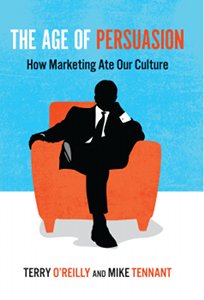
The Age of Persuasion book cover
Photos: Counterpoint Berkeley
Based on a radio program by the same name The Age of Persuasion How Marketing Ate Our Culture (Counterpoint, $26) was written by Terry O’Reilly, the host of the program, and Mike Tenant, who with O’Reilly produced, researched and wrote the content of the program. Although the book is written in the first person it is the work of both contributors. At the beginning, they point out some of the things they have in common beyond their knowledge of the ad world and radio; they are both natives of Ontario, Canada of Irish ancestry who started writing ads at private radio stations in the early 1980s.
In the book, they address the difference between marketing (the process of promoting, distributing and selling) and advertising (exposing the public to the product or service through paid ads); branding (the promise of a product or service); new technologies; clutter; radio audience; billboards; telemarketers; and movie theater ads among other related issues.

Terry O’Reilly, coauthor, The Age of Persuasion
The 324-page hardcover book, published in 2009, is divided into 12 chapters: Clutter, Breaking The Contract, The Rise and Fall and Rise of Branded Entertainment, Persuading Yoots, The YouTube Revolution, Guerillas in Our Midst, The Lesson of Clark Gable’s Undershirt, The Language of Persuasion, A Sense of Persuasion, The Human Face of Persuasion, The Long and Short of It, and The Wall of Cynicism.

Mike Tennant, coauthor, The Age of Persuasion
O’Reilly has experience as a copywriter and director and is the cofounder of Pirate, an audio production company based in New York and Toronto. A resident of Kitchener, Ontario Tennant is the cocreator and writer of The Age of Persuasion, a Canadian Broadcasting Corporation radio series.
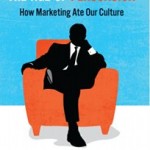
Click to buy The Age of Persuasion
Posted by Elena del Valle on June 17, 2011
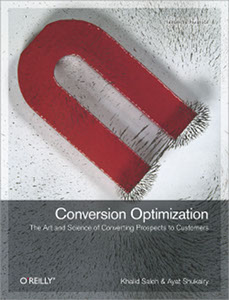
Conversion Optimization book cover
Photos: O’Reilly Media, Inc.
The internet has changed our lives in many ways. One of those is the way we gather and access information and, in some instances, buy and sell products and services. While the medium provides sellers direct access to potential buyers there are so many ads online surfers have become immune to them in many ways. Online potential customers are exposed to hundreds and, according to one source, as many as 3,000 ads each day.
Website owners and managers strive to drive traffic and more importantly sales to their space. As the internet has matured a specialty area has developed to help this process, conversion optimization. Experts in this field seek to maximize the number of sales related to the total number of visitors to a website.
In Conversion Optimization The Art and Science of Converting Prospects to Customers (O’Reilly Media, $34.99) Khalid Saleh, who has more than 12 years of experience in conversion optimization, and Ayat Shukairy, who dedicates her time to conversion optimization, website usability and online persuasion, explore the topic and share their tested and tried principles.
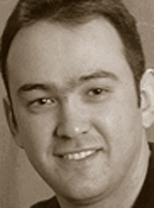
Khalid Saleh, coauthor, Conversion Optimization
They describe the Conversion Framework, a process they developed in 2007 and have refined since to encompass eight principles. The first six address a visitor’s experience at a website and the likelihood he or she will remain there. They are: understanding what website visitors seek, developing a website that inspires trust, being aware of the buying stages, addressing fears and related issues, incentives, and user engagement. The final two address testing and making a long term commitment to the process.

Ayat Shukairy, coauthor, Conversion Optimization
The 250-page softcover book published earlier this year is divided into two sections, online marketing and the Conversion Framework, and ten chapters: The Journey from Clicks to Sales, The Numbers Behind Your Website, Getting to Know Your Customers: Developing Personas, From Confidence to Trust, Understanding the Buying Stages, FUDs, Appealing with Incentives, Engagement, Testing: The Voice of Visitors, and Be Iterative.
Saleh and Shukairy are cofounders of Invesp, a conversion optimization company. Saleh, according to hi biography, has helped generate an average improvement of 65 percent in conversion rates for his customers. Shukairy is the company’s lead conversion rate strategist and also boasts of 65 percent conversion rates in her biography.

Click to buy Conversion Optimization
Comments:
Filed Under: Books
Posted by Elena del Valle on June 10, 2011
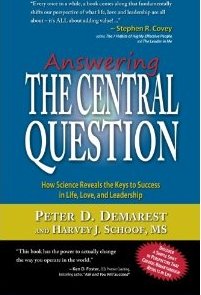
Answering The Central Question book cover
Photos: News and Experts
Making mistakes is part of being human, some would say. Yet most people feel disappointment and even embarrassment when they discover they made a mistake, and strive to make fewer mistakes in the future.
“When it hits us that we’ve made a mistake, we always have that instant of ‘Wow, that was stupid, what was I thinking?’ before we move on and try to solve the problem we’ve inadvertently caused,” said Peter Demarest, a life coach. “I refer to the elimination of that space of time between when we screw up and the time we realize we’ve screwed up as ‘practical enlightenment.’ For the past dozen years or so, I’ve been studying mind-brain science to see if there is a way to help us think better so we make fewer mistakes and create a better life.”
He and Harvey J. Schoof, MS coauthored Answering The Central Question How Science Reveals the Keys to Success in Life, Love and Leadership (Heart Lead Publishing, $21.95), a 230-page softcover book published this year to address the possible choices and behaviors readers can pursue that will result in the best value.
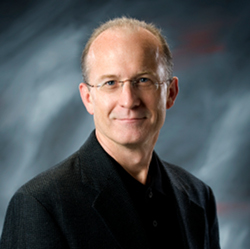
Peter Demarest, coauthor, Answering The Central Question
Demarest believes it is possible to do more than reduce mistakes. He believes that through science-based techniques people can dramatically improve how they think, make choices, act, and react without having to fix their so-called weaknesses. He derived these ideas from research in neuro-axiology, a combination of brain science and value science.
According to the authors, answering The Central Question is about more than self centered pursuits like making more money or being the best leader; they believe it is about creating the best value in business, life, relationships, and family. They believe readers can improve their performance and that successful people bring success to others through a leadership message that enriches their lives. The concepts and ideas they propose, they are convinced, have the potential to transform lives and the world in the long term in the way that the Renaissance changed the world in the past.
“Axiology,” Demarest said, “is the name of a fascinating science about how our value perceptions influence our thoughts, choices, actions, and reactions. It’s also about how value actually gets created in the world and in our lives.”
The book is divided into nine chapters: Introduction; Value, Values and Value Judgements; Neuroscience; Axiology, Philosophy and Science; Applied Axiology; Axiogenics, Applied Neuro-Axiology; The Valuegenic Organization; More Possibilities; and Final Thoughts.

Harvey J. Schoof, coauthor, Answering The Central Question
Demarest is a co-founder and president of Axiogenics. According to his biography, he discovered the connection between axiology or value science and neuroscience or brain science. He has spent more than seven years researching, developing, and testing the technology. Schoof, a founding partner of Axiogenics, LLC, has worked as a rehabilitation counselor, manager, human resources staff person, and university instructor of management and organizational communication.
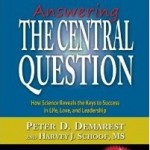
Click to buy Answering The Central Question
Comments:
Filed Under: Books









































